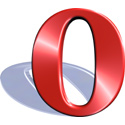The main reasons are innovation and security.
The intense competition between Netscape and Internet Explorer in the late 1990s ended with the World Wide Web dominated by one browser. At its height, Internet Explorer was used by an estimated 95% of people online.
There were many reasons IE took over: it came free with Windows, the most common operating system. Many webmasters would rely on Internet-Explorer-only features like ActiveX, leaving their sites inaccessible to people using other web browsers. As time went on, webmasters would write their web pages without checking for errors, except by testing them in Internet Explorer.
One Browser, One Web… One Target
You might think this is acceptable: One vision, leading the web forward. Unfortunately, once Internet Explorer’s dominance was secure, Microsoft did very little to update it. There was almost no innovation from 2001 through 2004, either in the front-end or the back-end, until Windows XP Service Pack 2 redesigned security. Many aspects of the languages that make up the web, particularly in the core languages of HTML and CSS, remained unavailable or buggy in IE until the 2006 release of version 7—5 years later—and even IE7 still has a long way to go.
Also, not everyone could or wanted to use Internet Explorer. Die-hard Netscape fans clung to their browser or shifted to Mozilla. People using Linux-based or Unix operating systems didn’t even have the option of using IE. Macintosh users could use Internet Explorer, but their version had different quirks than the Windows version everyone used for testing.
Two things happened.
First, the smaller browsers started innovating. While the heavyweights battled for dominance, a tiny Norwegian company called Opera began to re-think the way people used a web browser. Long after Internet Explorer and Netscape were free, Opera was still shareware…and still getting paid customers. (Today Opera’s free too.) Mozilla, a spin-off of the old Netscape, made an effort to implement as much of the web standards as possible, as correctly as possible. A small project called NetCaptor combined MDI with tabs to create “tabbed browsing,” which made its way into Opera, Mozilla, Firefox, Safari… and has finally appeared, years later, in Internet Explorer 7.
Second, the Internet ceased to be a friendly neighborhood and was flooded with viruses, trojan horses, and spyware. With a single program accounting for more than 90% of users, and a design that tied that program directly to the operating system, that meant one set of security bugs could attack most of the users on the internet. Alternative browsers and operating systems have long promoted their security over Windows and Internet Explorer. In 2004, people who used a Mac, Linux, or an alternative browser on Windows didn’t even need that extra level of protection because they weren’t even targets!
The Solution
Competition keeps innovation going. If several products have to fight for market share, they have to continually one-up each other. End result: all browsers improve, everyone wins.
It hardly seems a coincidence that Microsoft stopped developing Internet Explorer when they trounced Netscape, then started again as soon as Firefox started making gains.
Security may be easier to manage when you only have one place to look, but it’s also easier for the bad guys to crack. In 2004, they could get 90% of the web just by targeting Internet Explorer on Windows. In 2008, they can still get 75-80%, still aiming at one target. Now imagine that spread out among IE, Firefox, Opera and Safari on Windows, PowerPC Macs, Intel Macs, and Linux. They’d have to settle for 10% or try to crack every combination they could. Web developers, on the other hand, designing for the common language of the web, would have no more trouble than they do today.
And who knows? You just might find yourself liking another browser better than you thought!
This article originally appeared on the Alternative Browser Alliance in 2005. This is the latest version before I retooled the site a decade later.
